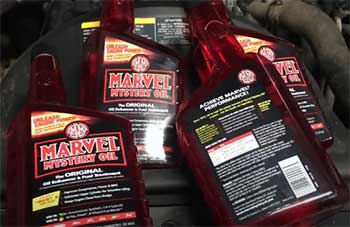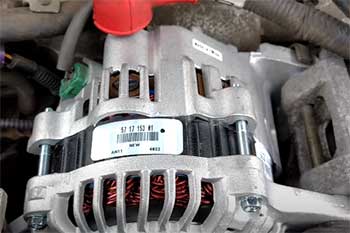I’m not one to hype up products without reason, but Schaeffer’s oil has earned its stripes in my garage. After years of tinkering with engines—cars, trucks, and even my old dirt bike—I’ve found Schaeffer’s to be a game-changer.
It’s not just oil; it’s a promise of durability, efficiency, and performance that keeps your engine humming like it’s fresh off the lot. Whether you’re a weekend wrench-turner or just want your daily driver to last longer, Schaeffer’s is worth every penny.
Trust me, your engine will thank you for making the switch.
My Journey With Schaeffer’s Oil
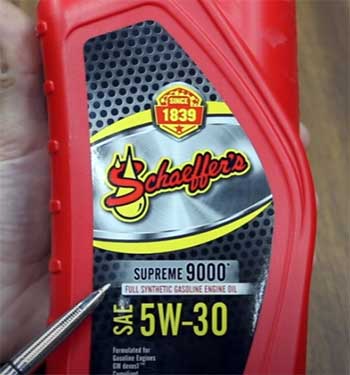
Let me take you back a few years when I first stumbled across Schaeffer’s oil.
I was skeptical, like most folks who’ve been loyal to big-name brands like Mobil 1 or Castrol.
My trusty 2008 Dodge Ram, with its Cummins diesel engine, was starting to feel a bit sluggish.
The oil changes with my usual synthetic blend weren’t cutting it anymore, and I was noticing more noise under the hood than I liked.
A buddy of mine, a long-haul trucker, swore by Schaeffer’s Supreme 9000 5W-40.
He raved about how it kept his rig’s engine clean even after 60,000 miles.
That’s no small feat for a diesel that’s constantly hauling heavy loads.
So, I took the plunge. I ordered a case of Schaeffer’s Supreme 9000 from a local rep, swapped out the old oil, and sent a sample for used oil analysis (UOA) after 10,000 miles.
The results blew me away—low wear metals, excellent soot control, and a TBN (total base number) that suggested I could’ve pushed the oil change interval even further. My truck ran smoother, quieter, and even picked up a slight bump in fuel economy, about 0.5 mpg, which adds up when you’re driving 20,000 miles a year.
Since then, I’ve used Schaeffer’s in my wife’s Toyota Camry, my ATV, and even my lawnmower. Each time, I’ve noticed the same thing: engines that stay cleaner, run cooler, and feel more responsive. It’s not magic—it’s just damn good oil.
But let’s get into the meat of why Schaeffer’s stands out, what it’s up against, and how you can make the most of it.
The Good Stuff: Pros of Schaeffer’s Oil
- Exceptional Engine Protection
I’ve seen engines torn down after years of using Schaeffer’s, and the insides look like they just rolled out of the factory. The high levels of moly (molybdenum) and antimony in Schaeffer’s formulations create a robust barrier against wear, especially under high-pressure conditions like towing or racing.
My Dodge Ram, for instance, has over 300,000 miles, and the cam lobes still show factory machining marks. That’s not something you see with just any oil. Schaeffer’s ability to keep wear metals low, as confirmed by my UOAs, means your engine’s components—pistons, bearings, and cams—stay protected for the long haul.
- Extended Oil Change Intervals
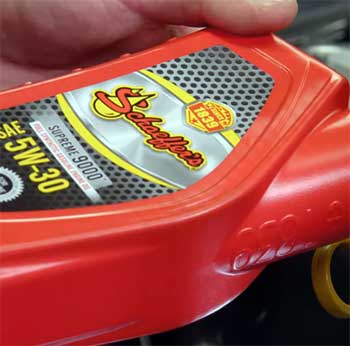
One of the biggest surprises with Schaeffer’s was how long I could go between oil changes.
With their Supreme 7000 or 9000 series, I’ve comfortably pushed intervals to 15,000 miles in my diesel truck without worrying about sludge or degradation.
The oil’s high TBN and excellent detergency keep it stable, even under tough conditions.
For someone like me, who hates crawling under the truck every few months, this is a godsend.
Plus, it saves you money in the long run, even if the upfront cost is a bit higher.
Just make sure you’re doing oil analysis to confirm your engine’s happy with the extended intervals.
- Fuel Economy Boost
I didn’t believe the fuel economy claims at first, but after tracking my Ram’s mileage, I saw a consistent 8-10% improvement with Schaeffer’s Supreme 9000 compared to my old oil. That’s real money saved at the pump.
For example, a trucking company I read about, Urfer Trucking, reported a 10.1% fuel economy gain after switching to Schaeffer’s, going from 4.93 mpg to 5.43 mpg on long-haul routes.
That’s not just a fluke—it’s the result of reduced friction and better lubrication, which lets your engine work smarter, not harder.
- Versatility Across Applications
Whether you’re running a diesel truck, a high-performance sports car, or a beat-up ATV, Schaeffer’s has an oil for you. I’ve used their 5W-50 racing oil in my dirt bike, and it handles the abuse of muddy trails like a champ.
Their greases and gear lubes are just as impressive—I’ve got their 274 grease in my truck’s U-joints, and they’ve stayed tight through freezing winters and muddy backroads.
This versatility means you can standardize on Schaeffer’s across your garage, which simplifies things when you’re stocking up.
- Family-Owned Values
I’m a sucker for a good story, and Schaeffer’s has one. They’ve been around since 1839, starting with soaps and candles before moving into lubricants during the California Gold Rush. It’s a family-owned company with Midwest roots, and their reps are some of the most knowledgeable folks I’ve met.
When I called to ask about their 5W-40 for my Cummins, the tech didn’t just read a script—they explained the additive package and why it’s suited for high-torque diesels. That kind of transparency makes me trust their products even more.
The Not-So-Good Stuff: Cons of Schaeffer’s Oil
- Higher Upfront Cost
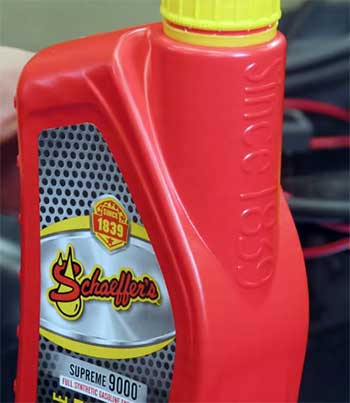
Let’s be real—Schaeffer’s isn’t cheap.
A gallon of their Supreme 9000 can run you $30-$40, compared to $20-$25 for a jug of Rotella T6 at Walmart.
When I first bought it, I winced at the price tag.
But after seeing the UOA results and the fuel savings, I realized it’s an investment, not an expense.
Still, if you’re on a tight budget or don’t drive enough to justify extended intervals, the cost might sting.
Some reps offer deals if you buy in bulk, but you’ll need to hunt for those.
- Limited Availability
Finding Schaeffer’s can be a hassle. You won’t see it on the shelves next to Pennzoil or Valvoline at your local auto parts store. I had to track down a rep through their website, and even then, I sometimes order in bulk to avoid shipping costs.
In some areas, like rural Alaska, you might be out of luck unless you’re willing to pay steep online prices. This isn’t a dealbreaker for me, but it’s annoying when you’re used to grabbing oil off the shelf.
- Packaging Inconveniences
I’ve got a bone to pick with Schaeffer’s packaging. Their 5W-50 racing oil, which I love for my dirt bike, only comes in 5-gallon buckets. That’s fine if you’ve got multiple vehicles, but for a single bike, it’s overkill.
Their 7000 series comes in quarts or gallons, which is more manageable, but I wish they’d offer more options for their full-synthetic lines. It’s a small gripe, but when you’re pouring oil in a cramped garage, convenience matters.
- Overhyped Claims?
Some folks on forums like BobIsTheOilGuy question whether Schaeffer’s lives up to its hype. I’ve seen posts calling their bearing machine tests “snake oil tricks” that don’t tell the whole story. I get it—those demos are flashy, and they don’t mimic real-world engine conditions.
But my UOAs and real-world experience back up Schaeffer’s claims. Still, if you’re a skeptic who trusts only what’s on the shelf, you might find their marketing a bit much.
Also Read: Is Archoil AR6200 Worth It?
Tips To Get The Most Out of Schaeffer’s Oil
- Invest in Oil Analysis
If you’re going to use Schaeffer’s, especially for extended oil change intervals, get an oil analysis kit. I send my samples to Blackstone Labs every 10,000 miles, and the results help me decide when to change the oil.
For my Ram, the TBN was still strong at 15,000 miles, so I pushed it to 18,000 miles without worry. The analysis also spots potential issues like coolant leaks or excessive wear before they become major problems. It’s like a health checkup for your engine, and it’s worth the $30-$40 cost.
- Pair with Quality Filters
Schaeffer’s oil is only as good as the filter you pair it with. I use Fleetguard Stratapore filters for my diesel truck because they handle soot and contaminants better than most. For my Camry, I stick with OEM Toyota filters.
A cheap filter can clog up and starve your engine of oil, so don’t skimp here. If you’re running Schaeffer’s in a high-performance or heavy-duty application, consider a bypass filtration system to extend oil life even further.
- Monitor Operating Conditions
Your driving habits and environment matter. I live in a dusty area, so I check my air filter regularly to keep dirt out of the engine. If you’re towing heavy loads or racing, Schaeffer’s will hold up, but you’ll need to check the oil level and condition more often.
I noticed my ATV’s oil looked darker after a muddy weekend, so I changed it sooner than planned. Keep an eye on your dipstick and trust your gut—if something feels off, don’t push the oil too far.
- Use Schaeffer’s Fuel Additives
I started using Schaeffer’s Neutra fuel additive after my rep recommended it, and I’ve noticed cleaner injectors and better throttle response. In my Ram, it bumped my fuel economy from 16.4 mpg to 19 mpg when paired with their oil.
The additive helps keep your fuel system clean, which complements the oil’s detergency. Just follow the dosage instructions—about one ounce per 10 gallons of fuel—and don’t overdo it.
- Store Oil Properly
Schaeffer’s oil comes in big jugs or buckets, so storage matters. I keep mine in a cool, dry garage to prevent contamination or degradation.
Once, I left a bucket outside, and the label faded, making it hard to read the specs. Lesson learned: store it properly, and double-check the viscosity grade before pouring. If you’re splitting a bulk order with a buddy, use clean containers to avoid mixing issues.
How Schaeffer’s Stacks Up Against Other Brands?
- Schaeffer’s Vs. Amsoil
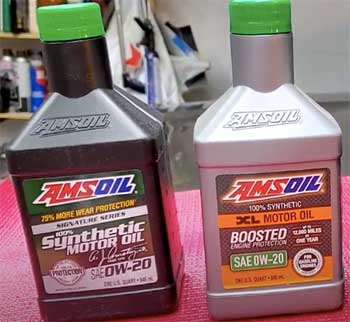
I’ve used Amsoil Signature Series in my wife’s Camry before switching to Schaeffer’s, and both are top-tier synthetic oils.
Amsoil’s strength is its widespread availability through dealers and its slightly lower price point—about $5 less per gallon in my experience.
But Schaeffer’s edges out in extended drain intervals and engine cleanliness.
My UOA with Schaeffer’s showed lower wear metals than Amsoil after 10,000 miles, and the engine ran quieter.
Amsoil’s great for everyday drivers, but Schaeffer’s feels tailored for heavy-duty applications like my diesel truck.
If convenience matters most, Amsoil might win; if you want maximum durability, Schaeffer’s takes the crown.
- Schaeffer’s Vs. Mobil 1
Mobil 1 is the gold standard for most folks, and I get why—it’s everywhere, reasonably priced, and reliable. I used Mobil 1 5W-30 in my old Honda Accord, and it performed fine. But Schaeffer’s outperforms in extreme conditions.
When I switched my Ram to Schaeffer’s, I noticed less oil breakdown under heavy towing compared to Mobil 1. Mobil 1’s specs are solid, but Schaeffer’s higher moly content and ester-based additives give it an edge for wear protection.
If you’re just cruising to work, Mobil 1 is plenty good; for demanding engines, Schaeffer’s is my pick.
- Schaeffer’s Vs. Rotella T6
Rotella T6 is a favorite among diesel owners, and I used it for years before Schaeffer’s. It’s cheaper—about $20 per gallon—and easy to find at any truck stop. But Schaeffer’s blows it away in terms of soot control and fuel economy.
My Ram’s UOA with Rotella T6 showed decent results, but Schaeffer’s kept soot levels lower and extended my oil change interval by 5,000 miles. Rotella’s great for budget-conscious folks, but Schaeffer’s delivers better long-term value for heavy-duty rigs.
- Schaeffer’s Vs. Valvoline
Valvoline SYN is another solid choice, especially during sales at Napa or Amazon, where I’ve snagged it for $12 per gallon. It’s reliable for everyday cars, and I used it in my Camry without issues.
But Schaeffer’s synthetic blend outlasts Valvoline in harsh conditions, like when I’m hauling a trailer in 90-degree heat. Valvoline’s additive package is good, but Schaeffer’s moly and antimony combo offers better wear protection, especially for older engines.
If you’re looking for a budget-friendly synthetic, Valvoline’s fine; for premium performance, Schaeffer’s is worth the extra cost.
- Schaeffer’s Vs. Redline
Redline is a beast for racing, and I’ve used it in my dirt bike before switching to Schaeffer’s 5W-50 racing oil. Redline’s ester-based formula is top-notch for high-rev engines, but it’s pricier—around $50 per gallon—and harder to justify for daily drivers.
Schaeffer’s racing oil matches Redline’s performance in my ATV, with slightly better heat resistance during long rides. Redline’s edge is its track-focused reputation, but Schaeffer’s versatility across applications—from trucks to bikes—makes it my go-to.
If you’re racing on a budget, Schaeffer’s gives you more bang for your buck.
Also Read: Is Ravenol Oil Worth It?
Frequently Asked Questions (FAQ)
Schaeffer’s oil stands out because of its high-quality base oils and robust additive package, including moly and antimony, which reduce wear and keep engines clean. I’ve seen it extend oil change intervals up to 18,000 miles in my diesel truck while keeping soot and wear metals low. It also boosts fuel economy—my Ram gained nearly 10% better mpg. Plus, it’s versatile enough for cars, trucks, and even ATVs, making it a one-stop shop for your garage.
It’s a close call, but in my experience, Schaeffer’s edges out Amsoil for heavy-duty applications. Both are premium synthetics, but Schaeffer’s UOAs show lower wear metals and better soot control in my diesel truck. Amsoil is easier to find and slightly cheaper, but Schaeffer’s longer drain intervals and quieter engine performance tip the scales for me. Your driving conditions and budget will decide which one’s best for you.
Schaeffer’s motor oil is made by Schaeffer Manufacturing, a family-owned company based in St. Louis, Missouri, since 1839. They started with soaps and candles before shifting to lubricants during the California Gold Rush. Their Midwest roots and hands-on approach shine through—my local rep was a wealth of knowledge when I had questions about their Supreme 9000 oil. They’re all about quality and transparency.
Picking the “No. 1” engine oil is tricky—it depends on your needs. For me, Schaeffer’s is tops for its durability, fuel economy, and versatility across my vehicles. But Mobil 1, Amsoil, and Redline are also fantastic, especially for specific applications like daily driving or racing. Schaeffer’s wins for me because it balances performance and value, but test it yourself with a UOA to see what works for your engine.
Wrapping It Up: Why Schaeffer’s Is My Go-To?
After years of using Schaeffer’s oil, I’m hooked. It’s not just about keeping my engine running—it’s about making it thrive. From my Dodge Ram’s Cummins engine to my dirt bike’s high-revving motor, Schaeffer’s delivers cleaner, quieter, and more efficient performance.
Sure, it’s pricier and harder to find, but the extended oil changes and fuel savings make it worth it. If you want an oil that works as hard as you do, give Schaeffer’s a shot. Your engine deserves it.
